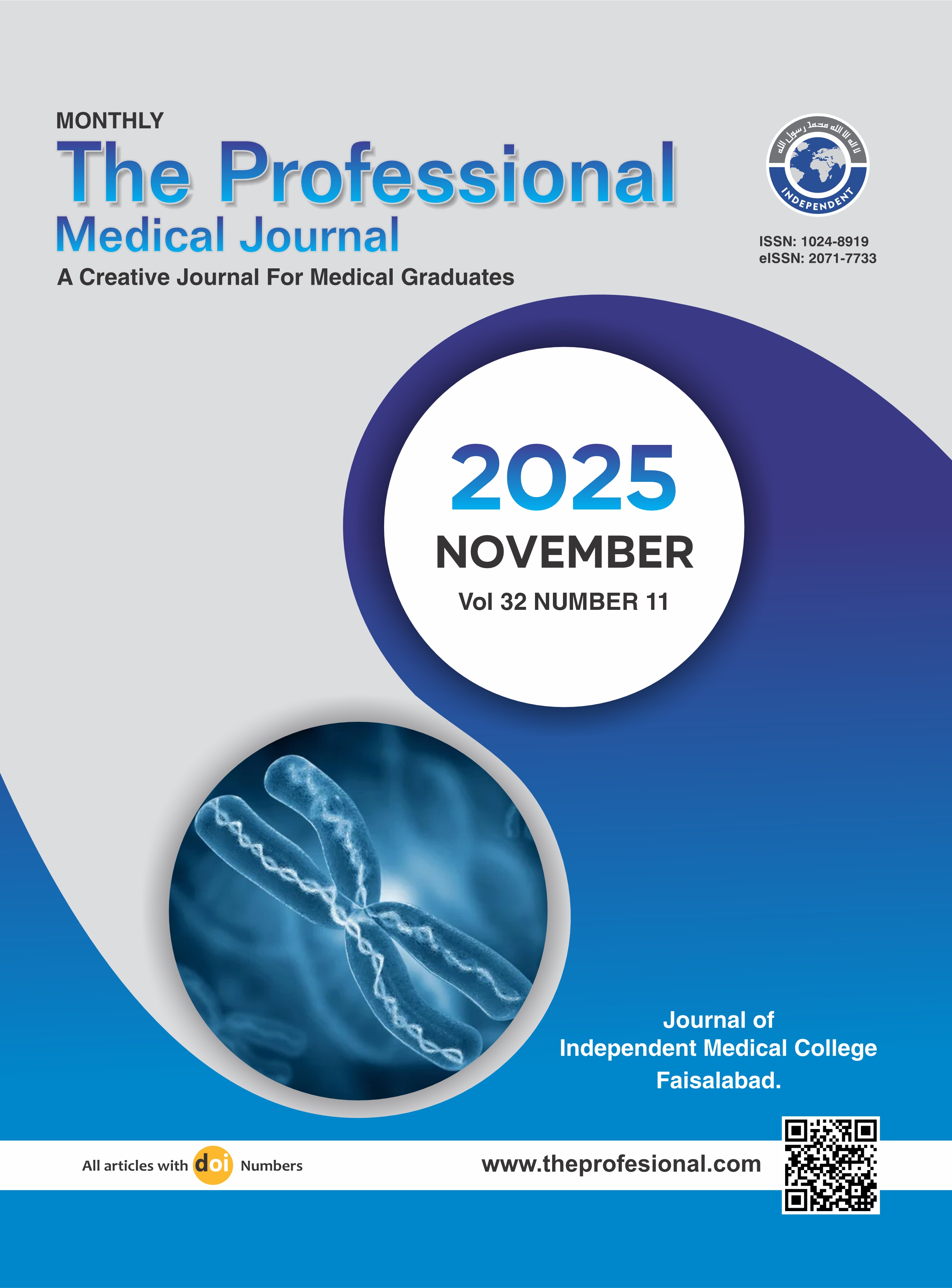Clinical profile of nonproteinuric kidney disease in Type 2 diabetic patients.
DOI:
https://doi.org/10.29309/TPMJ/2025.32.11.10016Keywords:
Diabetic Kidney Disease, Nonproteinuric DKD, Proteinuric DKD, Renal Function, T2DMAbstract
Objective: To compare the demographic, clinical, and biochemical characteristics of nonproteinuric versus proteinuric diabetic kidney disease (DKD) among patients with type 2 diabetes mellitus (T2DM). Study Design: Cross-sectional Observational study. Setting: Department of Nephrology, Nishtar Hospital, Multan. Period: November 2024 to April 2025. Methods: Adult patients diagnosed with T2DM attending the Nephrology Department of Nishtar Hospital, Multan, were enrolled through non-probability consecutive sampling based on predefined inclusion criteria. Participants were classified into nonproteinuric and proteinuric DKD groups according to standard albuminuria cut-offs and estimated glomerular filtration rate (eGFR) values. Baseline demographic details, clinical data, and biochemical profiles were systematically documented and compared between both groups using appropriate statistical tests. A p-value < 0.05 was considered statistically significant. Results: Among 300 patients, nonproteinuric diabetic kidney disease (DKD) was observed in 32.3%. Compared to the proteinuric group, nonproteinuric DKD had mean age (55.33 ± 7.99 vs 58.67 ± 7.43 years, p < 0.001), shorter diabetes duration (10.75 ± 3.65 vs 12.80 ± 4.25 years), higher hemoglobin (11.27 ± 1.05 vs 10.35 ± 1.61 g/dL), higher serum albumin (3.87 ± 0.62 vs 3.42 ± 0.31 g/dL), lower serum creatinine (1.15 ± 0.26 vs 1.42 ± 0.39 mg/dL, p < 0.001), lower HbA1c (7.02 ± 1.15% vs 7.71 ± 1.31%), and higher eGFR (54.90 ± 13.17 vs 41.94 ± 8.21 ml/min/1.73m²). Hypertension, dyslipidemia, and RAAS inhibitor use were more frequent in the proteinuric group (all p < 0.05). Conclusion: Nonproteinuric diabetic kidney disease is common in type 2 diabetes and exhibits distinct demographic and biochemical features compared to proteinuric DKD, underscoring the need for targeted recognition and management.
Downloads
Published
Issue
Section
License
Copyright (c) 2025 The Professional Medical Journal

This work is licensed under a Creative Commons Attribution-NonCommercial 4.0 International License.


